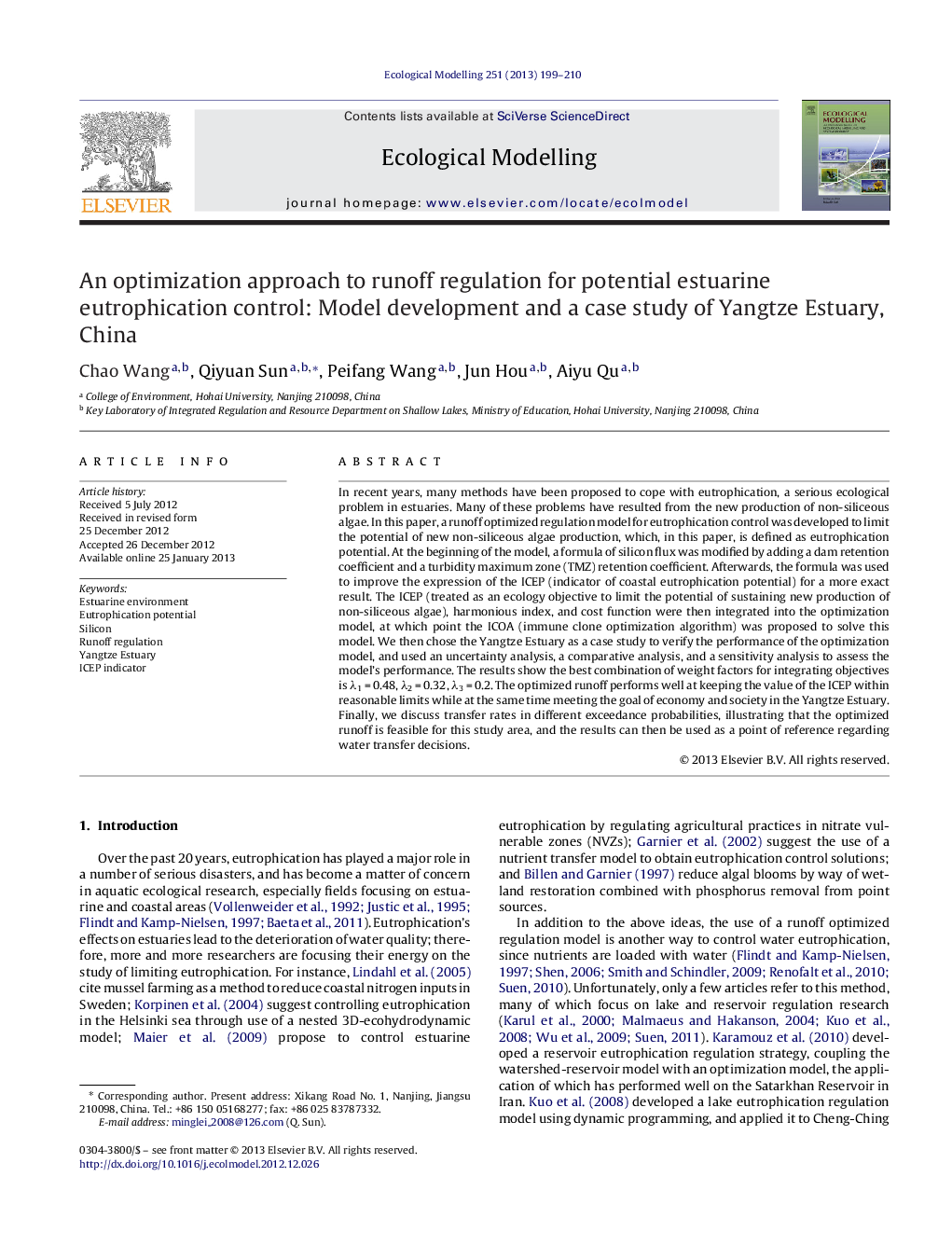| کد مقاله | کد نشریه | سال انتشار | مقاله انگلیسی | نسخه تمام متن |
|---|---|---|---|---|
| 4376154 | 1617494 | 2013 | 12 صفحه PDF | دانلود رایگان |

In recent years, many methods have been proposed to cope with eutrophication, a serious ecological problem in estuaries. Many of these problems have resulted from the new production of non-siliceous algae. In this paper, a runoff optimized regulation model for eutrophication control was developed to limit the potential of new non-siliceous algae production, which, in this paper, is defined as eutrophication potential. At the beginning of the model, a formula of silicon flux was modified by adding a dam retention coefficient and a turbidity maximum zone (TMZ) retention coefficient. Afterwards, the formula was used to improve the expression of the ICEP (indicator of coastal eutrophication potential) for a more exact result. The ICEP (treated as an ecology objective to limit the potential of sustaining new production of non-siliceous algae), harmonious index, and cost function were then integrated into the optimization model, at which point the ICOA (immune clone optimization algorithm) was proposed to solve this model. We then chose the Yangtze Estuary as a case study to verify the performance of the optimization model, and used an uncertainty analysis, a comparative analysis, and a sensitivity analysis to assess the model's performance. The results show the best combination of weight factors for integrating objectives is λ1 = 0.48, λ2 = 0.32, λ3 = 0.2. The optimized runoff performs well at keeping the value of the ICEP within reasonable limits while at the same time meeting the goal of economy and society in the Yangtze Estuary. Finally, we discuss transfer rates in different exceedance probabilities, illustrating that the optimized runoff is feasible for this study area, and the results can then be used as a point of reference regarding water transfer decisions.
► River runoff management model is used to control estuarine eutrophication potential.
► ICEP is embedded into river runoff management model as an ecological objective.
► Dissolved silicon flux formula is modified by using dam, TMZ retention coefficients.
► Immune clone optimization algorithm is used to solve the runoff optimization model.
Journal: Ecological Modelling - Volume 251, 24 February 2013, Pages 199–210